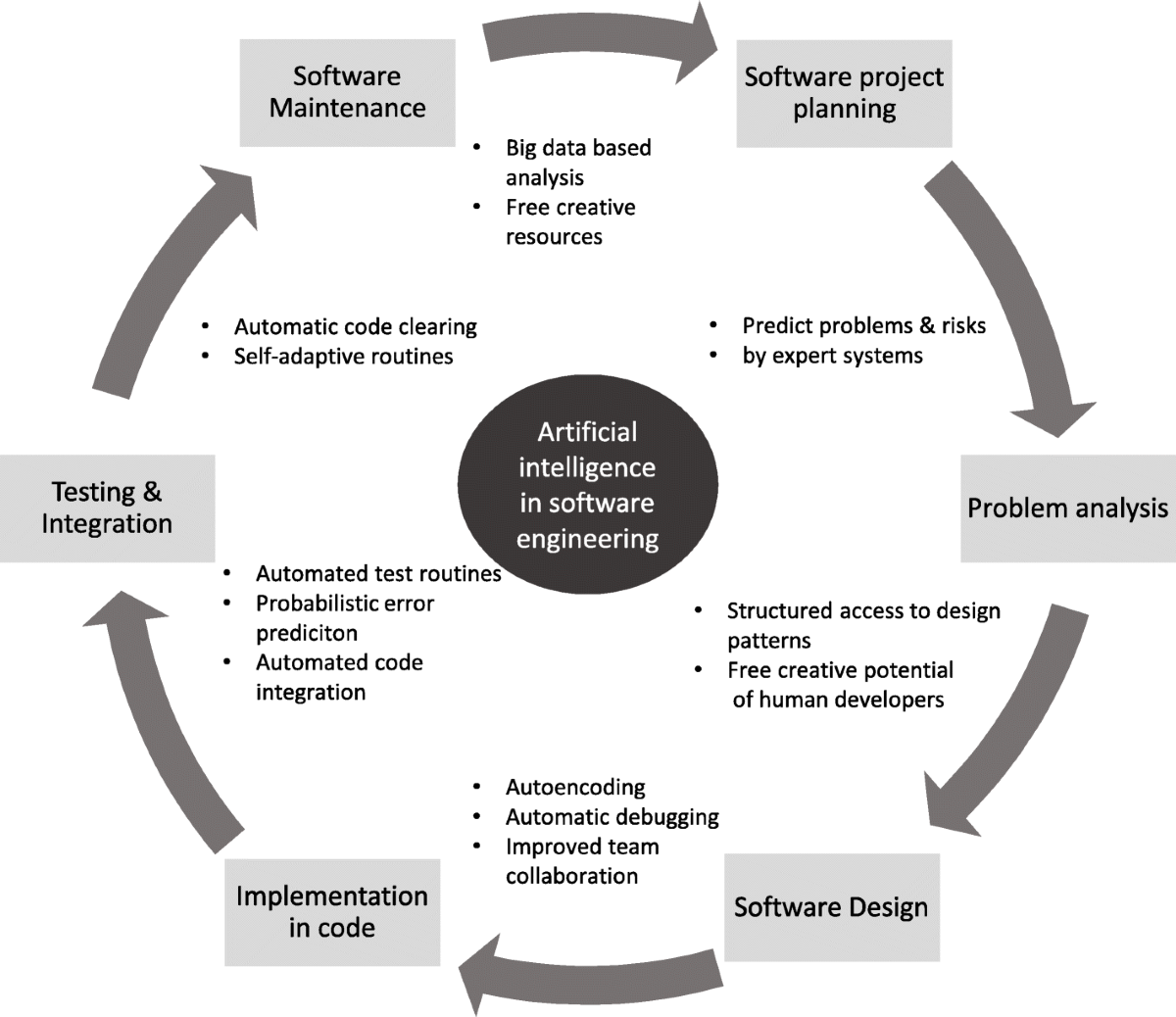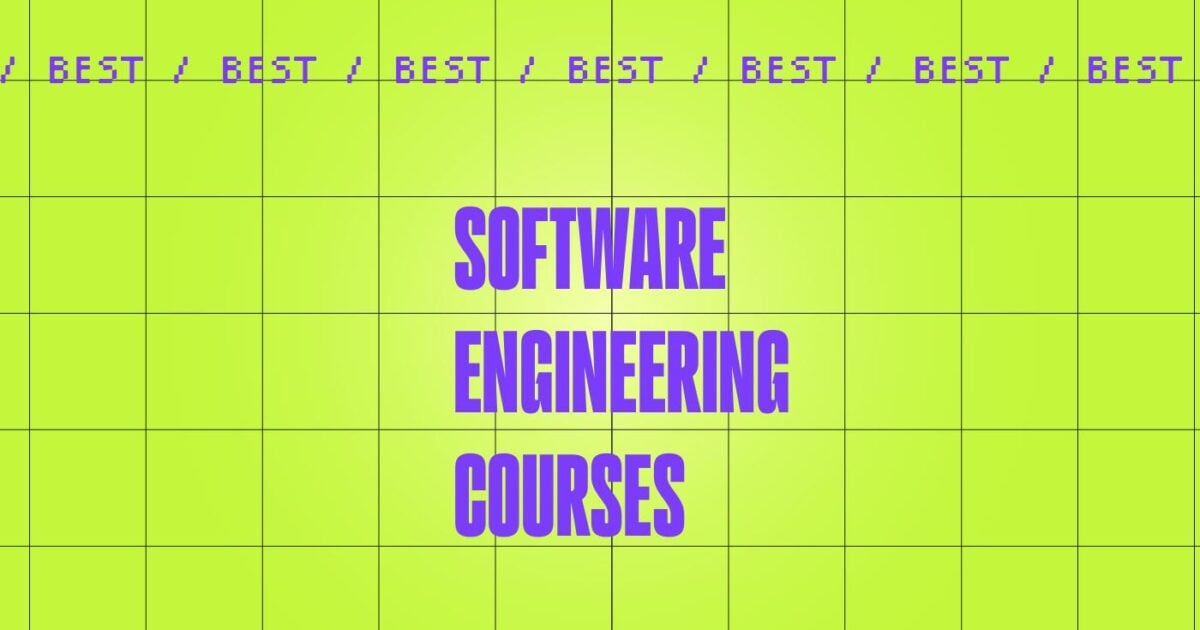All Categories
Featured
Table of Contents
- – 4 Simple Techniques For Should I Learn Data Sc...
- – Software Engineering In The Age Of Ai - An Ove...
- – Getting My 7-step Guide To Become A Machine L...
- – The Basic Principles Of How To Become A Machi...
- – Not known Incorrect Statements About Machine...
- – Getting My Machine Learning To Work
- – The Greatest Guide To Advanced Machine Learn...
Some individuals think that that's unfaithful. Well, that's my entire profession. If someone else did it, I'm going to utilize what that individual did. The lesson is placing that apart. I'm compeling myself to analyze the feasible options. It's more about taking in the web content and trying to apply those ideas and less concerning discovering a library that does the work or finding somebody else that coded it.
Dig a bit deeper in the mathematics at the start, so I can develop that foundation. Santiago: Ultimately, lesson number 7. This is a quote. It claims "You need to comprehend every detail of an algorithm if you intend to utilize it." And then I state, "I believe this is bullshit advice." I do not believe that you have to recognize the nuts and screws of every formula before you use it.
I would have to go and check back to really obtain a far better instinct. That does not indicate that I can not fix points making use of neural networks? It goes back to our sorting instance I assume that's simply bullshit advice.
As an engineer, I have actually worked with several, numerous systems and I have actually used many, lots of things that I do not comprehend the nuts and screws of how it works, although I understand the effect that they have. That's the final lesson on that string. Alexey: The amusing point is when I think of all these collections like Scikit-Learn the algorithms they utilize inside to implement, for instance, logistic regression or something else, are not the like the algorithms we examine in artificial intelligence classes.
4 Simple Techniques For Should I Learn Data Science As A Software Engineer?
So even if we tried to find out to get all these basics of artificial intelligence, at the end, the formulas that these libraries make use of are various. Right? (30:22) Santiago: Yeah, definitely. I think we require a great deal extra pragmatism in the market. Make a lot even more of an influence. Or focusing on providing worth and a little much less of purism.

I usually speak to those that desire to function in the industry that want to have their influence there. I do not dare to speak concerning that since I don't understand.
However right there outside, in the market, materialism goes a long method without a doubt. (32:13) Alexey: We had a remark that stated "Really feels even more like motivational speech than chatting about transitioning." So possibly we must switch. (32:40) Santiago: There you go, yeah. (32:48) Alexey: It is a good inspirational speech.
Software Engineering In The Age Of Ai - An Overview
Among things I wished to ask you. I am taking a note to discuss progressing at coding. Initially, allow's cover a couple of things. (32:50) Alexey: Let's begin with core tools and frameworks that you need to find out to really shift. Let's say I am a software program designer.
I know Java. I understand SQL. I recognize how to utilize Git. I recognize Bash. Perhaps I know Docker. All these points. And I read about artificial intelligence, it appears like an awesome point. So, what are the core devices and structures? Yes, I saw this video and I get convinced that I do not require to get deep right into mathematics.
What are the core devices and structures that I need to find out to do this? (33:10) Santiago: Yeah, absolutely. Fantastic inquiry. I assume, number one, you should start learning a little bit of Python. Because you already understand Java, I don't believe it's mosting likely to be a huge change for you.
Not since Python is the same as Java, yet in a week, you're gon na obtain a lot of the differences there. Santiago: Then you obtain particular core tools that are going to be used throughout your whole occupation.
Getting My 7-step Guide To Become A Machine Learning Engineer In ... To Work
You obtain SciKit Learn for the collection of maker learning formulas. Those are devices that you're going to have to be utilizing. I do not recommend just going and finding out about them out of the blue.
We can discuss specific programs later. Take among those training courses that are going to start presenting you to some issues and to some core ideas of machine understanding. Santiago: There is a training course in Kaggle which is an intro. I don't keep in mind the name, but if you most likely to Kaggle, they have tutorials there free of charge.
What's excellent regarding it is that the only requirement for you is to know Python. They're mosting likely to offer an issue and inform you exactly how to utilize choice trees to solve that specific problem. I assume that process is exceptionally powerful, since you go from no equipment learning background, to comprehending what the issue is and why you can not fix it with what you recognize today, which is straight software program design methods.
The Basic Principles Of How To Become A Machine Learning Engineer In 2025
On the other hand, ML designers specialize in building and deploying artificial intelligence designs. They concentrate on training designs with data to make forecasts or automate tasks. While there is overlap, AI designers deal with more diverse AI applications, while ML engineers have a narrower concentrate on equipment discovering formulas and their functional application.

Device discovering designers concentrate on developing and releasing equipment discovering versions into production systems. They deal with design, making sure designs are scalable, effective, and incorporated into applications. On the other hand, information researchers have a broader duty that consists of data collection, cleansing, expedition, and building models. They are usually in charge of removing insights and making data-driven choices.
As organizations progressively adopt AI and artificial intelligence technologies, the demand for skilled experts grows. Device learning engineers function on innovative tasks, add to development, and have affordable salaries. Success in this field requires continual understanding and keeping up with advancing technologies and strategies. Machine discovering roles are generally well-paid, with the capacity for high gaining capacity.
ML is basically different from standard software advancement as it concentrates on training computers to pick up from data, instead of shows explicit guidelines that are carried out systematically. Unpredictability of end results: You are most likely utilized to writing code with predictable outcomes, whether your function runs as soon as or a thousand times. In ML, nevertheless, the end results are much less specific.

Pre-training and fine-tuning: How these models are educated on substantial datasets and after that fine-tuned for specific tasks. Applications of LLMs: Such as text generation, view evaluation and details search and retrieval. Documents like "Attention is All You Required" by Vaswani et al., which presented transformers. Online tutorials and training courses concentrating on NLP and transformers, such as the Hugging Face course on transformers.
Not known Incorrect Statements About Machine Learning In Production
The capacity to manage codebases, combine adjustments, and solve problems is equally as essential in ML advancement as it remains in typical software jobs. The abilities created in debugging and screening software application applications are highly transferable. While the context may alter from debugging application logic to recognizing problems in data processing or design training the underlying principles of methodical investigation, theory testing, and repetitive improvement are the very same.
Artificial intelligence, at its core, is greatly reliant on stats and possibility theory. These are crucial for understanding just how algorithms gain from information, make predictions, and assess their efficiency. You ought to consider coming to be comfortable with principles like analytical relevance, circulations, hypothesis screening, and Bayesian thinking in order to style and translate designs efficiently.
For those interested in LLMs, an extensive understanding of deep learning designs is beneficial. This consists of not just the mechanics of neural networks however additionally the design of particular models for different usage instances, like CNNs (Convolutional Neural Networks) for picture processing and RNNs (Persistent Neural Networks) and transformers for sequential information and all-natural language handling.
You need to understand these problems and find out strategies for determining, alleviating, and interacting regarding prejudice in ML versions. This includes the potential impact of automated choices and the ethical ramifications. Many models, specifically LLMs, require substantial computational resources that are typically given by cloud platforms like AWS, Google Cloud, and Azure.
Structure these skills will not only facilitate a successful transition into ML yet also make sure that programmers can contribute successfully and properly to the development of this vibrant field. Concept is vital, yet nothing defeats hands-on experience. Start working on projects that enable you to apply what you've learned in a practical context.
Construct your tasks: Beginning with simple applications, such as a chatbot or a text summarization device, and slowly enhance complexity. The area of ML and LLMs is rapidly evolving, with brand-new advancements and modern technologies emerging routinely.
Getting My Machine Learning To Work
Sign up with communities and online forums, such as Reddit's r/MachineLearning or neighborhood Slack networks, to review ideas and get recommendations. Participate in workshops, meetups, and seminars to get in touch with various other professionals in the area. Add to open-source tasks or create post regarding your learning trip and jobs. As you obtain knowledge, start looking for opportunities to include ML and LLMs right into your work, or look for brand-new duties concentrated on these modern technologies.

Possible usage instances in interactive software, such as referral systems and automated decision-making. Comprehending uncertainty, fundamental analytical steps, and possibility distributions. Vectors, matrices, and their role in ML algorithms. Mistake reduction methods and gradient descent clarified just. Terms like version, dataset, functions, tags, training, reasoning, and validation. Information collection, preprocessing methods, version training, evaluation procedures, and implementation factors to consider.
Choice Trees and Random Woodlands: Intuitive and interpretable designs. Matching trouble types with ideal models. Feedforward Networks, Convolutional Neural Networks (CNNs), Recurring Neural Networks (RNNs).
Information flow, makeover, and function engineering strategies. Scalability principles and efficiency optimization. API-driven approaches and microservices assimilation. Latency administration, scalability, and version control. Continuous Integration/Continuous Implementation (CI/CD) for ML operations. Design tracking, versioning, and performance tracking. Identifying and resolving changes in version efficiency over time. Addressing efficiency bottlenecks and resource management.
The Greatest Guide To Advanced Machine Learning Course

You'll be introduced to three of the most pertinent parts of the AI/ML self-control; overseen knowing, neural networks, and deep learning. You'll understand the differences in between typical programs and maker understanding by hands-on development in supervised understanding prior to building out complicated distributed applications with neural networks.
This program offers as an overview to machine lear ... Show Much more.
Table of Contents
- – 4 Simple Techniques For Should I Learn Data Sc...
- – Software Engineering In The Age Of Ai - An Ove...
- – Getting My 7-step Guide To Become A Machine L...
- – The Basic Principles Of How To Become A Machi...
- – Not known Incorrect Statements About Machine...
- – Getting My Machine Learning To Work
- – The Greatest Guide To Advanced Machine Learn...
Latest Posts
Data Science Vs. Data Engineering Interviews – Key Differences
The Best Websites To Practice Coding Interview Questions
Mastering Data Structures & Algorithms For Software Engineering Interviews
More
Latest Posts
Data Science Vs. Data Engineering Interviews – Key Differences
The Best Websites To Practice Coding Interview Questions
Mastering Data Structures & Algorithms For Software Engineering Interviews